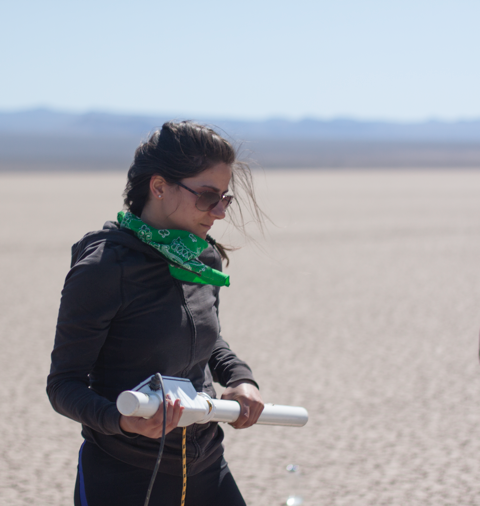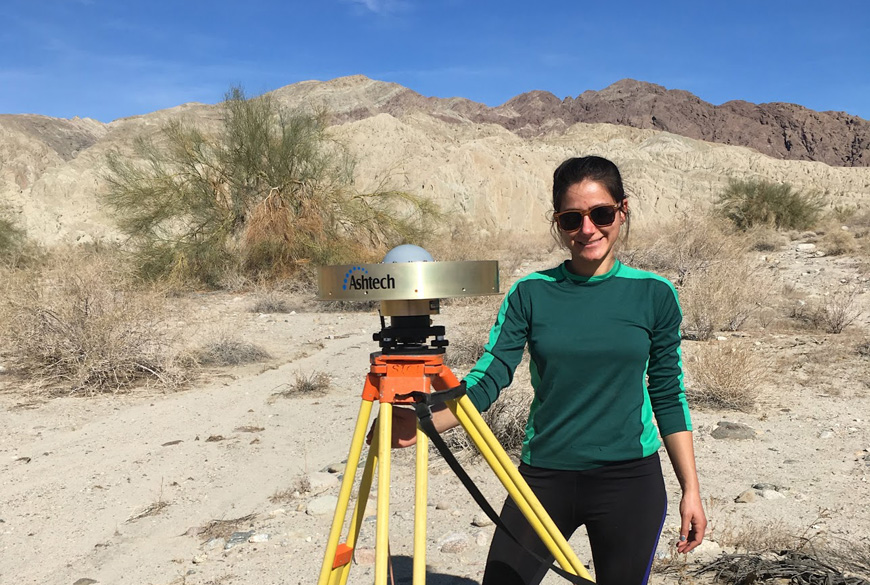
What’s the most exciting thing about your work?
DG: The most exciting aspect about my work is the human impact. We know that the western U.S. will experience a large earthquake—it’s just a matter of when—so the work that I’m doing has a clear and immediate connection to the wellbeing of my community.
Are there any role models or mentors who have helped you along the way?
DG: My undergraduate advisors have been especially supportive of my research pursuits. They gave me countless opportunities to test out research in a variety of geoscience fields, and were instrumental in guiding me to Scripps to pursue my research goals. I have a wonderful thesis committee of talented professors and researchers who are always willing to help me when I’m stuck.
What are some of the challenges you face as a student?
DG: No one warned me about the amount of travel that being a graduate student entails! Sometimes it can be exhausting and difficult to maintain research productivity alongside travel obligations. Of course, that experience varies considerably from student to student, but if you want to collaborate with other researchers, learn from those outside of Scripps, or share your work, it can involve a lot of traveling. In addition to attending conferences and meetings around the U.S., my PhD experience has taken me to a handful of international conferences, workshops, and seminars. On average, I travel internationally once or twice a year, with domestic travel in between. For me, there has been no "typical" experience. My latest trip to Japan involved meetings in multiple cities and lasted almost a month. On the other hand, I traveled to Beijing to present my research and was back on a plane home in less than 72 hours! The opportunity for travel (especially international) has been an exciting and unexpected perk of my experience as a PhD student.
What are your future plans?
DG: After Scripps, I plan to continue pursuing research, but I also hope to make more time for science communication, public outreach, and science policy. My research is important, but it doesn’t make an impact unless communicated effectively to the public and to policymakers. I hope to find an effective balance.
You can find Dara on Twitter @dara_berg_ and the Scripps Orbit and Permanent Array Center @sio_sopac.
- Shawndiz Hazegh






修改评论